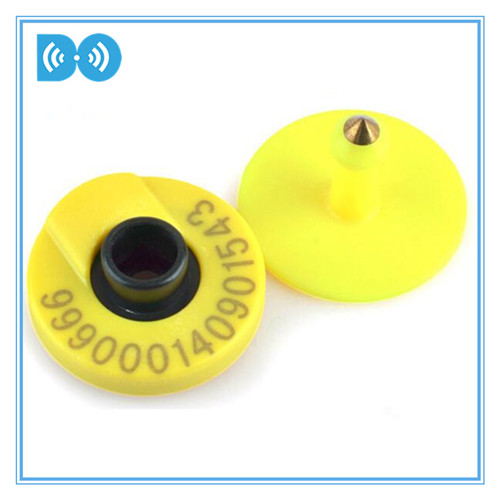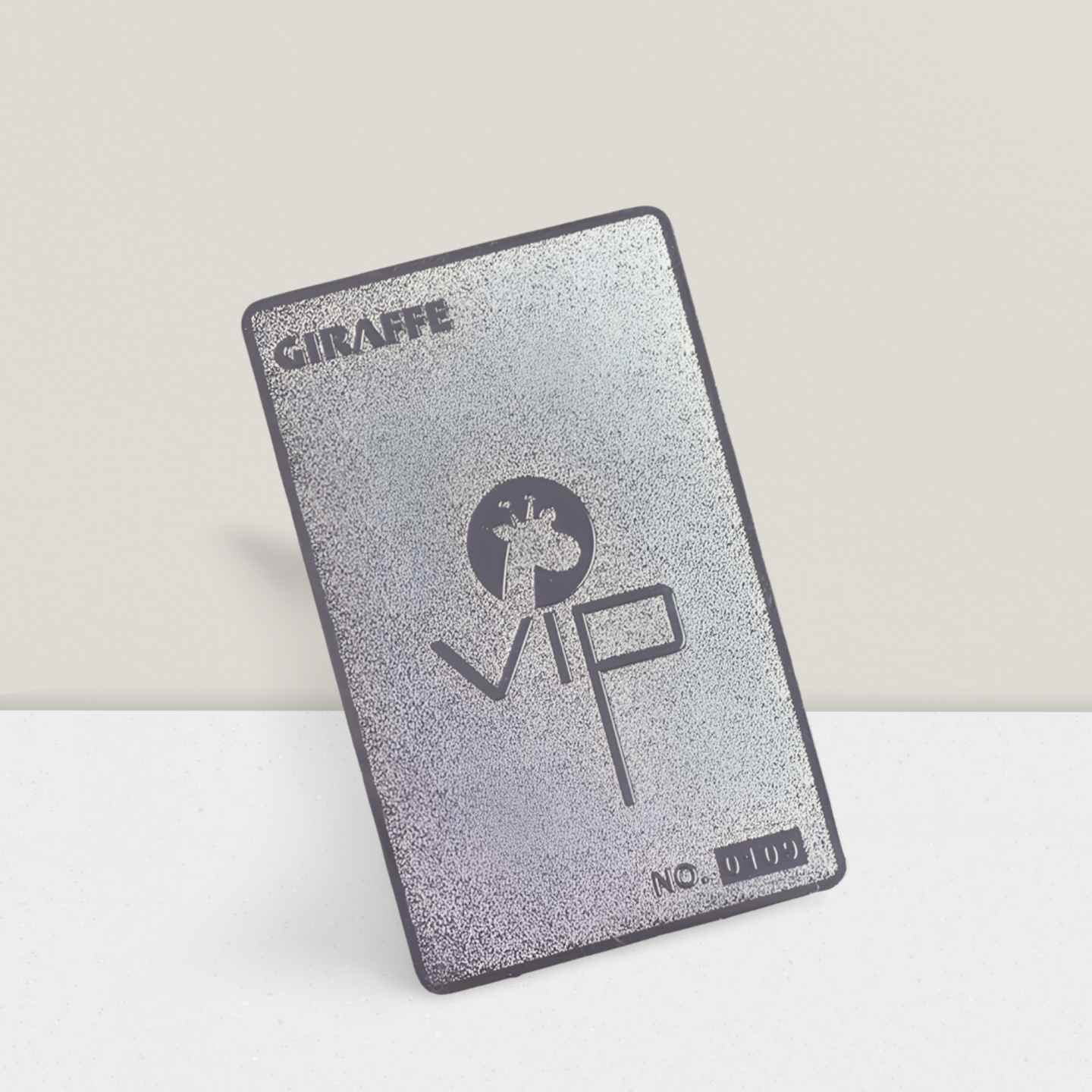RFID cattle tracking technology allows farmers to receive real-time updates on the progress of their livestock. It allows them to monitor the cattle's activity levels, health statuses, and other behavioral changes that affect their well-being.
The technology relays data to the farmer via radio waves via an RFID reader. It contains an RFID chip that stores all of the information about the animal.
This article will show you how to use RFID technology to track cattle. Continue reading to learn how this approach has transformed livestock management around the world.

What Exactly Is RFID Cattle Tracking?
Radio-Frequency Identification (RFID) cattle tracking is the use of a radio wave device to identify and track animals.
Farmers purchase an Animal RFID tag with enough memory space to store all of their animals' data. When the farmer wants to know the status of their animals, they use an RFID reader to scan and obtain updated RFID tags.
Farmers with large herds of animals will benefit from the system. Each tag will have a unique ID that is specific to the animal. This eliminates the possibility of data mix-ups, ensuring top-notch inventory management.
RFID Cattle Tracking Has Many Advantages
Many farmers face significant challenges with livestock management. As a result of these difficulties, numerous techniques for resolving the problem have been developed. Visual tags were one of the first techniques used for cattle identification.
While this method was useful, it required farmers to get close to the animal in order to collect the necessary information. This method made the process more time-consuming and prone to data entry errors.
However, the use of RFID technology in cattle tracking has transformed the livestock farming industry. The method is simple to implement and ensures that your farm is managed efficiently. Here are a few advantages to implementing the technology on your farm:
Simple Animal Recognition
Farmers with a large number of animals may have difficulty identifying their target. As a result, a tracker is essential for efficient farm management.
The farmer will feed all of the animal's identifiable data into the RFID tag when using RFID tags. When the animal comes close to an RFID reader, this information will be retrieved. As a result, farmers will be able to easily manage their inventories.
The health of the herd is being tracked.
Animals are subjected to a variety of stresses that negatively impact their comfort. As a result, farmers must always be on the lookout for any environmental changes that may cause the animals discomfort.
Some of the health issues that an RFID tag can track include:
Detection of injuries. When an animal is injured, it prefers to stay in one place for an extended period of time. When you notice such a change, you should look into what caused the sudden behavioral shift. A thorough examination will allow you to identify and treat the problem as soon as possible.
Body temperature fluctuations When an animal becomes ill, the body temperature rises as the body fights the infectious agents. A heat detector device can be included by the farmer to monitor the animal's temperature. Any deviation from the norm should raise an eyebrow. If the farmer is unable to determine the immediate cause of the change, he or she should contact a veterinary officer immediately.
Determine heat and cold stress. When animals are subjected to extreme weather conditions, they are more likely to become dull and less productive. Too much cold or heat, for example, can significantly reduce milk production in dairy cows. Farmers can monitor the temperatures in their barns to ensure that all of the animals are comfortable.
Breeding Improvement
If you're a good farmer, you should be able to figure out the best time for artificial insemination. When the animal is in heat, the insemination process improves the chances of conception.
If you're wondering what to look for when determining the best time for artificial insemination, don't worry!
You can use an RFID tag to track your animals' behavior. If a female exhibits restlessness or mounting other animals, contact your AI vet right away.
Even better, farmers can keep all animal records on the tag. They can obtain information on when an animal last gave birth and when it is expected to be in heat again.
Furthermore, the ability of the tags to store data aids farmers in eliminating cross-breeding among herd members.
Because the tags contain all of the information about the animals, the farmer can ensure that blood-related animals do not mate. This phenomenon ensures that breeds improve.
Inventory Management Made Simple
When you use an RFID tag on your animals, you can integrate all of your farm records. As a result, you'll have easy access to each animal's current and future records. The integration simplifies farm management.
Some of the data that can be stored in RFID cards to facilitate inventory management include:
Dates of last treatment and records This allows the farmer to know exactly when to perform standard farm practices such as deworming and cattle dipping.
Records of Production The majority of the tags have read/write capabilities, allowing you to regularly update the production records of your animals. This practice will allow you to detect changes in productivity and act on them as soon as possible.
Routines for feeding. It is critical to know what to feed your animals at all times. RFID tags can aid in the storage of customized diet information for your animals. This way, you'll never forget to balance your animal feeds, ensuring proper nutrient intake.
To keep up with various farm changes, you should always ensure that your data is regularly updated. The more up-to-date your information, the better the outcomes of your farm practices will be.
GPS Monitoring
An RFID tag allows the farmer to incorporate a GPS location detector. There is no way the animals could be stolen without your knowledge with this device.
You can use the GPS to track your animal's movements by connecting it to your phone. Furthermore, the GPS tracking system allows you to monitor mobility stress in your animals.
This practice is critical in pregnant animals because it allows you to pinpoint the animal's exact location in the event of a strain.
What Are the Benefits of Using RFID Tags to Track Cattle?
RFID tags have numerous advantages for farmers. It not only adds convenience, but it also increases farm productivity. The following are some of the benefits of using RFID tags to track your animals:
Lowers management costs. Manual inventory management necessitates many hours of paperwork and data entry. If you have a large herd of cattle, the tasks will take a lot of time and effort to complete. However, the use of RFID tags automates data entry systems, making it simple to track the progress of all animals.
It lowers the likelihood of errors. Your records will be prone to errors if you use manual systems. Such errors, if not corrected in a timely manner, will lead to poor farm management, which will eventually affect your farm's productivity. With an RFID system, your chances of making mistakes are greatly reduced.
RFID Tags are Affordable. Purchasing an RFID tag is a long-term commitment. You will only need to invest a few dollars to reap the benefits of RFID tracking for many years.
The ease of use. Unlike visual tags/ tattoo numbers, an animal does not have to be still for you to collect data from it. All you'll need is an RFID reader to get the data with unparalleled ease.
Investing in the best RFID tags for cattle tracking will undoubtedly transform your cattle rearing adventures. It will increase farm efficiency, which will lead to increased profitability.
Which RFID Cattle Tracking Tag Is Best?
Before purchasing an RFID tag for your animals, make sure it complies with ISO 11784, ISO 14223-1, and ISO 11785. These requirements ensure that the tag is suitable for use on your animals.
Low-frequency passive tags are the most widely used livestock tracking tags. The LF tag operates at a low frequency and is best suited for use with animals and other liquid materials.
Because animals are likely to encounter high-moisture areas, LF RFID tags should always be considered for best results.
Which RFID Reader Is Best For Cattle Tracking Tags?
RFID readers are classified into two types: portable and fixed. Farmers will benefit most from a mobile reader because they require simple LF tags with a short read range.
With this handheld reader, you can access your livestock and collect the data you need without forcing them to approach the reader, which would be inconvenient.
Using an Electronic/RFID Tag in conjunction with a Visual Tag
While using visual tags for cattle tracking can be time-consuming, they can be easily combined with electronic animal tags to improve results.
In this case, the RFID/electronic tag and the visual tag will both have the same number. This matched pair tag is useful when managing your livestock with a herd management system.
It adds flexibility by allowing you to use the visual ID when you don't have an electronic ID reader. You can also easily download an animal's electronic number by matching it with its visual number.
255.jpg)
DO RFID tag manufacturer produce various NFC tags. The ntag215 NFC tags are small, inexpensive and portable, it with a tiny ntag215 chip and antenna operate at 13.56 MHz.
More >>
Best Metal business card with qr code can be used in various industries and applications. For instance, hotels can add QR codes on their keycards that direct guests to a website where they can make changes to their reservation.
More >>